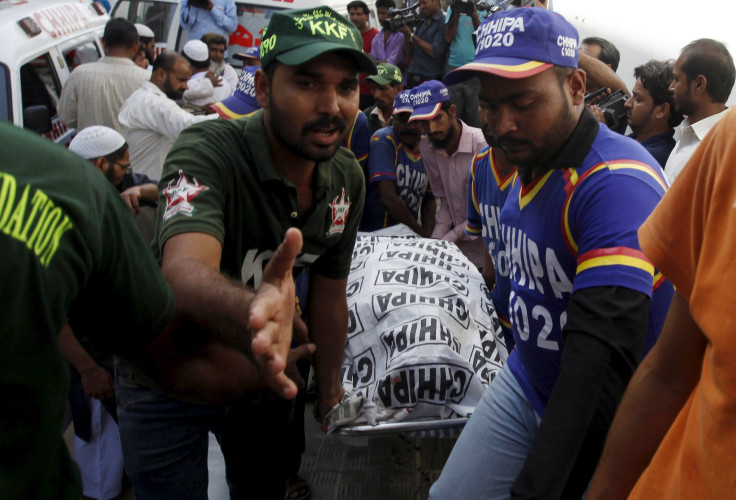US Media Companies Still Have A Long Way To Go To Protect Journalists Working In Hostile Environments

HELSINKI — When Afzal Mughal went missing in Quetta, Pakistan, last year, all of the journalists in the country received an alert almost immediately. Newsrooms across the country sprung into action to offer advice and assistance locating the missing reporter. In some cases, this tactic of immediacy helps more than law enforcement involvement, said Pakistan Press International Chairman Owais Aslam Ali at the World Press Freedom Day summit in Helsinki this week.
In countries like Pakistan, journalists have themselves established a support system to ensure the safety of those working in the media. Writers and photographers access that network on a daily basis, Aslam Ali said. And although the Pakistani government may not support free expression, the country's journalists collaborate effectively when it comes to safety and security, Ali added. Countries like Mexico and Iraq have similar nationwide safety protocols.
As a participant on the panel on journalism security — representing the Committee to Protect Journalists (CPJ) and International Business Times — and sitting alongside Aslam Ali and several editors and policymakers, one thing became clear: Media houses in the U.S. can do much more to ensure not just the safety of their own employees, but the protection of reporters employed with other outlets.
The U.S. has a different problem than Pakistan and Mexico, countries where journalists fear crackdowns and assaults within their countries and by their own police forces. U.S.-based journalists operate in a country where the government supports free speech and expression. But they work in a system of media houses that tend to operate independently of one another unless instigated through civil society organizations such as CPJ, Reporters Without Borders or the Overseas Press Club.
These civil society organizations, along with other United Nations groups, developed unique policies over the years to guide media companies in protecting their employees. Although small digital organizations tend to lack the resources to fully implement the guidelines, mainstream outlets have done so and continue to allocate resources to training and equipping their reporters. But they can go one step further.
In the U.S., managers and editors enact their own individual safety protocols that are drafted and overseen by in-house lawyers, but rarely do they share their plans with other companies. The competitive nature of the industry can affect the safety of reporters and, in general, resources stay inside the company. Risk assessments drafted for hostile environments are often kept secret and retained by the news organizations that commissioned them, while journalists in the field are frequently required to travel alone to get the story first and exclusively. Fixers — locals who help reporters deal with an area's laws, arrange transportation and translate — are paid handsomely in return for loyalty to one news organization. Journalists make exceptions to these rules on the ground when there is safety in numbers; but generally speaking, U.S. news outlets like to keep to themselves.
This attitude has shifted somewhat as the media industry downsized over the past 10 years. The competition — to be the first, to be exclusive, to be the best, to have the most talented fixer — has grown more intense as access to information, especially in the Middle East, has declined.
But the freelance journalism community in the U.S. has gone the opposite way when it comes to sharing resources. Since more people are self-employed as journalists and the competition to get commissioned by a media outlet is greater, the act of sharing resources is commonplace. Facebook groups and email threads connect freelance journalists across the globe. Earlier this year, while reporting on the refugee crisis in Europe for IBT, it was not uncommon to see groups of freelance journalists renting cars together, buying each other food and sodas to get through the day and even coordinating fixer costs — all to ensure that they could afford to get the story out to the public.
The sharing of small resources inside the freelancing community may not seem like much, but it creates a sense of camaraderie that is less pronounced in employees of large U.S. media companies. That's not to say that those writers and photographers do not have their own ways of communicating and working with other staff correspondents, but there is a limit to how much they are allowed to share.
Groups like Frontline Freelance Register, an advocacy group that represents freelance journalists, single-handedly worked to secure the release of independent journalist Anna Day from a Bahrain prison earlier this year. That kind of community could be fostered more in the mainstream media. It has worked for countries around the world, and it could work for U.S. media houses as well.
Based on what happened this week in Helsinki, it is clear that civil society organizations and government groups are already active in discussing how to improve the safety of journalists. But there is a gap in communication, not only between those two groups but between these organizations and media corporations. And there is an even bigger gap between the companies themselves. Rarely are the journalists on the ground — those experiencing the conflicts firsthand — included in these kinds of conversations.
So far this year, 10 journalists have been killed doing their jobs, a number that's likely to rise. In 2015, 25 were killed, and 1,189 have been killed since 1992, according to CPJ. Journalists are increasingly at risk of being attacked as a result of their profession, and the need for coordination and cooperation among media houses is no longer a choice, but a necessity.
© Copyright IBTimes 2024. All rights reserved.











